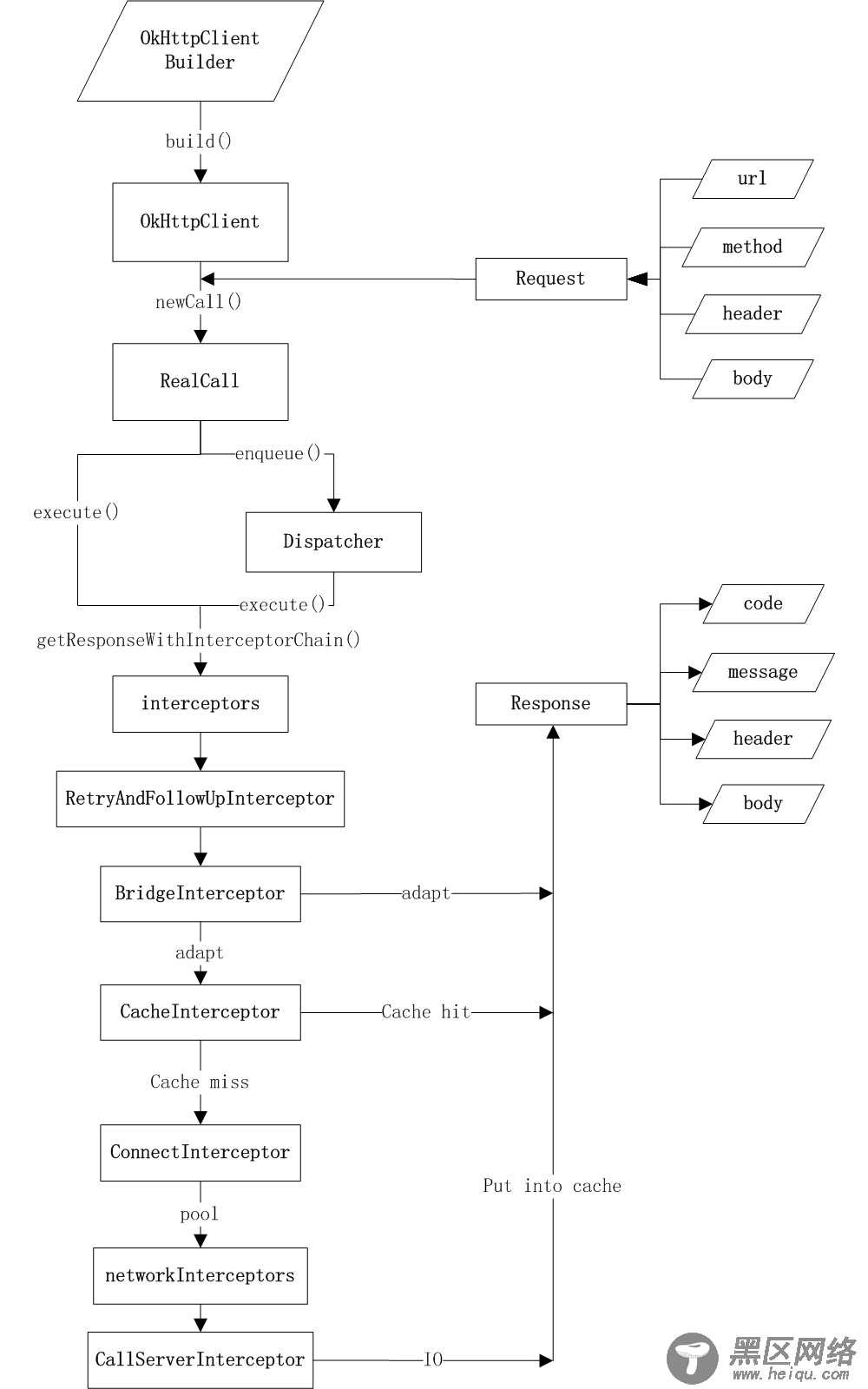复用机制:Http中添加了一种KeepAlive机制,当数据传输完毕后仍然保持连接,等待下一次请求时直接复用该连接。
ConnectionPool :取到的话复用,没有取到放到连接池中。
ConnectionPool关键代码:
OkHttp 默认最大并发数 64,单域名最大并发 5,为了实现请求的并发,Dispatcher 配置了一个线程池,
//线程池,核心线程数为0,最大线程数为最大整数,线程空闲存活时间60s,//SynchronousQueue 直接提交策略 private static final Executor executor = new ThreadPoolExecutor(0, Integer.MAX_VALUE , 60L , TimeUnit.SECONDS, new SynchronousQueue<Runnable>(), Util.threadFactory("OkHttp ConnectionPool", true)); //空闲连接的最大连接数 private final int maxIdleConnections; //保持连接的周期 private final long keepAliveDurationNs; //双端队列,存放具体的连接 private final Deque<RealConnection> connections = new ArrayDeque<>(); //用于记录连接失败的route final RouteDatabase routeDatabase = new RouteDatabase(); //构造函数//从这里可以知道,空闲连接的最大连接数为5,保持连接的周期是5分钟 public ConnectionPool() { this(5, 5, TimeUnit.MINUTES); } public ConnectionPool(int maxIdleConnections, long keepAliveDuration, TimeUnit timeUnit) { this.maxIdleConnections = maxIdleConnections; this.keepAliveDurationNs = timeUnit.toNanos(keepAliveDuration); // Put a floor on the keep alive duration, otherwise cleanup will spin loop. if (keepAliveDuration <= 0) { throw new IllegalArgumentException("keepAliveDuration <= 0: " + keepAliveDuration); } }同步
Dispatcher会在同步执行任务队列中记录当前被执行过得任务Call,同时在当前线程中去执行Call的getResponseWithInterceptorChain()方法,直接获取当前的返回数据Response;
异步
Dispatcher内部实现了懒加载无边界限制的线程池方式,同时该线程池采用了SynchronousQueue这种阻塞队列。异步执行是通过Call.enqueue(Callback responseCallback)来执行,在Dispatcher中添加一个封装了Callback的Call的匿名内部类Runnable来执行当前的Call。这里一定要注意的地方这个AsyncCall是Call的匿名内部类。AsyncCall的execute方法仍然会回调到Call的getResponseWithInterceptorChain方法来完成请求,同时将返回数据或者状态通过Callback来完成。
使用缓存,有多种不同的缓存方式
自定义一个拦截器
class LoggingInterceptor implements Interceptor { @Override public Response intercept(Interceptor.Chain chain) throws IOException { Request request = chain.request(); long t1 = System.nanoTime(); logger.info(String.format("Sending request %s on %s%n%s", request.url(), chain.connection(), request.headers())); Response response = chain.proceed(request); long t2 = System.nanoTime(); logger.info(String.format("Received response for %s in %.1fms%n%s", response.request().url(), (t2 - t1) / 1e6d, response.headers())); return response; } }
LeakCanary原理解析
lifecycleCallbacks监听Activity的onDestroy方法,正常情况下activity在onDestroy后需要立即被回收,onActivityDestroyed方法最终会调用RefWatcher.watch方法:
通过将Activity包装到WeakReference(弱引用)中,被WeakReference包装过的Activity对象如果被回收,该WeakReference引用会被放到ReferenceQueue中,通过监测ReferenceQueue里面的内容就能检查到Activity是否能够被回收
如果Activity没有被回收,调用GcTigger.runGc方法运行GC,如果这时候还没有被回收,那就说明Activity可能已经泄露。
Evenbus是做什么的?和RXjava有什么区别?

